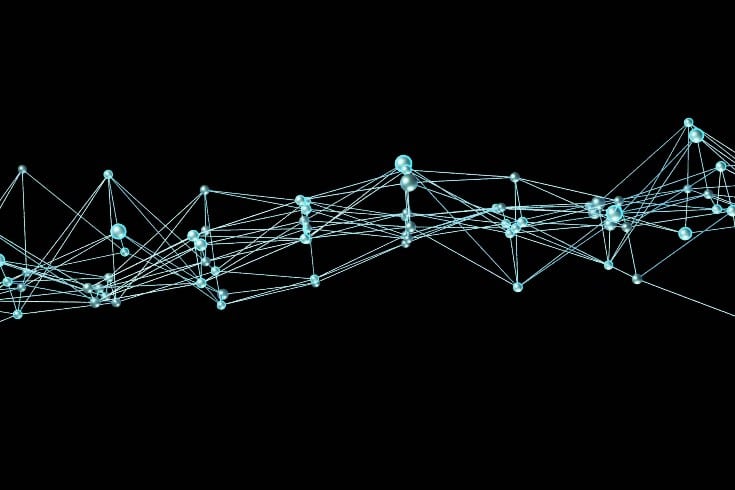Statute of Limitations for Requesting Disclosure of Sender Information? Three Statutes of Limitations to Be Aware of When Posting Online

How long do you have to request the disclosure of sender information or claim damages if you have suffered reputational damage such as ‘defamation’ or ‘invasion of privacy’ due to posts on the Internet?
In this article, we will explain various ‘statutes of limitations’ (time limits) related to the procedures for dealing with reputational damage.
Time Limit for Deleting Posts on the Internet

Firstly, there is no statute of limitations for requesting the deletion of a post or comment.
No matter how many years pass, if the post is illegal and infringes on the victim’s rights to honor and privacy, the fact remains unchanged. Therefore, there is no ‘statute of limitations’ for deletion itself.
However, there are three time constraints to consider when taking legal action such as claiming damages against the other party.
The first is the statute of limitations due to technical constraints in IT, the second is the civil statute of limitations in claiming damages, and the third is the statute of limitations for criminal prosecution.
Let’s explain each of these individually.
https://monolith.law/reputation/defamation[ja]
https://monolith.law/reputation/privacy-invasion[ja]
1. Statute of Limitations Due to IT and Technical Constraints

Identifying the author of an online post has a strict time limit. Broadly speaking, the identification process is divided into the following three stages:
- Obtain disclosure of the poster’s IP address etc. from the administrator of the site where an article that could be considered defamation or invasion of privacy has been posted, or from the web server administrator.
- Once the IP address is disclosed, it becomes clear whether the post came from a mobile carrier (if using a mobile network) or from a provider (if using a fixed line). First, request the relevant mobile carrier or provider to prohibit the deletion (preserve) of communication logs.
- Obtain disclosure of the poster’s name and address from the relevant mobile carrier or provider (this part usually becomes a lawsuit requesting disclosure of the name and address).
https://monolith.law/reputation/disclosure-of-the-senders-information[ja]
At the second and third stages, where the mobile carrier or provider is involved in disclosing the poster’s name and address, the statute of limitations (time limit) due to IT and technical constraints becomes an issue.
Statute of Limitations Due to IT Constraints in Lawsuits Requesting Disclosure of Sender Information
The logs of mobile carriers and providers are not publicly disclosed, but their retention period is determined by each company’s policy.
For example:
- Mobile carriers usually only retain logs for about three months, and fixed-line providers often only retain logs for about six months to a year. Once this period has passed, the logs no longer exist, and it is naturally impossible to request preservation or disclosure.
- Even if a request to prohibit the deletion of logs is granted, they will not preserve them indefinitely. If a lawsuit requesting disclosure of the name and address is not promptly filed, the once preserved logs may disappear.
These are some of the issues.
Especially in the former case, for posts made three months or more than a year ago, the log indicating “who posted it” no longer exists in this world due to these technical constraints, making it impossible to identify the poster from the post.
If the sender’s personal information is unknown, there is a possibility that a claim for damages cannot be made, so it is necessary to expedite the request for disclosure of sender information.
This is a constraint that is more “IT and technical” than a legal “statute of limitations”.
2. Statute of Limitations for Damage Claims

Here, we delve into the legal issue of the “statute of limitations”.
If an article that constitutes defamation or invasion of privacy is posted, once the poster is identified, you can claim damages against the poster based on Article 709 of the Japanese Civil Code.
The “damages” referred to here include attorney’s fees required to identify the poster and consolation money for emotional distress.
https://monolith.law/reputation/compensation-for-defamation-damages[ja]
The issue is the “statute of limitations for claims for damages caused by illegal acts (torts)”.
And there are two types of “statute of limitations for posting on the internet”.
20 Years from the Time of Posting on the Internet
The right to claim damages based on an illegal post disappears 20 years after the post was made. However, in relation to reputational damage, this is unlikely to be a problem in reality.
Wanting to claim damages for a post made more than 20 years ago is a situation that is hard to imagine, at least as of the time of writing this article in 2022.
3 Years from the Time the Damage and the Perpetrator were Identified
This is the point that actually becomes a problem.
Once the poster is identified and it is clear who the perpetrator is, if 3 years pass, it becomes impossible to claim damages against that perpetrator.
However, when exactly the “time when the damage and the perpetrator were identified” is not always clear.
In a past court case, it was ruled that:
“The time when the victim knew to a possible extent under the circumstances where a claim for damages against the perpetrator is practically possible should be interpreted as the time when the statute of limitations starts.”
Supreme Court Judgment of January 29, 2002 (Heisei 14)
In cases of reputational damage that constitutes defamation or invasion of privacy, until the disclosure of the name and address of the poster is received from the mobile carrier or provider in the flow as described above, a “claim for damages against the perpetrator” is usually impossible in any sense.
Therefore, the time when the name and address of the poster is disclosed is the starting point of the “3-year” countdown, or in legal terms, the “commencement point”. This is one way of thinking.
However, in practical terms, just receiving the disclosure of the name and address does not necessarily mean that the “perpetrator” is clear.
What is disclosed here is, to be precise, the “name and address of the contract holder of the line that made the post”, not the “name and address of the actual poster”.
For example,
- The contract holder is a man in his 50s, but from the content of the post, it is thought that the poster is likely his daughter who lives with him. After starting negotiations for damage claims with a content-certified mail, it was confirmed that it was indeed his daughter.
- The contract holder is a company, but after starting negotiations, it was confirmed that a specific employee made the post from a line within the company, and it was found that the company could be held responsible for user liability under various circumstances.
In these cases, “knowing the name and address of the contract holder” and “knowing who to claim damages against” are not the same.
It often takes some negotiation and time to confirm who can actually be claimed against.
According to the above-mentioned court case, the “time when the victim knew to a possible extent under the circumstances where a claim for damages against the perpetrator is practically possible” is not the “time when the name and address of the contract holder is known”, but in the above examples, it would be:
- “The time when it was confirmed that it was the daughter”
- “The time when it was found that the company could be held responsible for user liability”
It is thought that these timings are the starting point of the statute of limitations.
In this case, the “time when it was confirmed who to claim damages against” is considered to be the starting point of the statute of limitations.
3. Statute of Limitations for Criminal Prosecution

So far, we have discussed the civil concept of the “statute of limitations” or time limits. However, there is also a concept of a criminal statute of limitations. Specifically,
- Statute of limitations for damage claims: The time limit within which a victim can make a damage claim against the offender.
- Statute of limitations under criminal law: The time limit within which one can file a complaint or be arrested or prosecuted by the police or prosecutors for defamation and other offenses.
These are separate concepts.
This applies not only to online defamation but also to virtually all other topics.
Moreover, the criminal “statute of limitations” varies depending on the crime committed.
Further complicating matters, there are two types of concepts: the “period for filing a complaint (statute of limitations for filing a complaint)” and the “statute of limitations for public prosecution”.
Period for Filing a Complaint (Statute of Limitations for Filing a Complaint)
For crimes such as defamation, a public prosecution will not be initiated unless the victim files a “complaint”.
Unlike crimes such as murder or assault, it is only when the victim files a “complaint” that the matter becomes a “police matter”.
In addition to defamation, depending on what has been violated, there may be a possibility of being charged with crimes such as insult, credit damage, obstruction of business, intimidation, and forcible obstruction of business due to defamation.
Among these, there are some that can be prosecuted even without filing a complaint.
For this “complaint”, there is a time limit of “within 6 months from the day the offender was identified”. In past precedents, it has been stated that
“The day the offender was identified” refers to the day after the criminal act was completed, and even if the complainant identified the offender during the continuation of the crime, that day cannot be considered the starting day for filing a complaint in a complaint crime.
Supreme Court, December 17, 1970 (Showa 45)
This is also a concept that raises the question of “when exactly is it in the case of online defamation”.
Statute of Limitations for Public Prosecution
Crimes that have passed a certain amount of time since their occurrence will not be prosecuted. This is probably the closest thing to the “statute of limitations” in everyday language.
For example, the “statute of limitations for public prosecution” for defamation is three years. After this period, the offender cannot be punished.
In the case of privacy infringement, there is no crime called “privacy infringement” in the first place, so there is no arrest or prosecution by the police, and there is no statute of limitations for public prosecution itself.
Among the crimes that could potentially be charged as defamation, the statute of limitations for public prosecution is set as follows:
- For crimes other than defamation, the insult crime is one year
- Credit damage, obstruction of business, intimidation, and forcible obstruction of business are three years
The statute of limitations for public prosecution varies depending on the crime, so it is necessary to consider what crime the defamatory post corresponds to and how many years the statute of limitations for that crime is.
Time Required for Requesting Disclosure of Sender’s Information

It takes approximately 2 to 3 months to obtain an order for the disclosure of an IP address through measures such as provisional dispositions. Even after the IP address is disclosed, it takes about 6 to 9 months to get a judgment for the disclosure of the sender’s information.
Therefore, it takes at least about 9 months in total to identify the sender’s information.
For more information on the process of requesting the disclosure of sender’s information, please refer to the explanation below.
https://monolith.law/reputation/disclosure-of-the-senders-information[ja]
Summary: Consult a Lawyer for a Smooth Process of Requesting Disclosure of Sender Information

As you can see, there are various “statutes of limitations” and “time limits” related to reputational damage caused by posts on the Internet. The determination of the “starting point” when these time limits begin to count down is quite specialized.
It is necessary to respond quickly to requests for disclosure of sender information, and smooth handling is required as procedures through the court are also involved.
However, it is important not to give up easily on reputational damage caused by old posts, and to first consult with experts such as lawyers for consideration.
Category: Internet





















